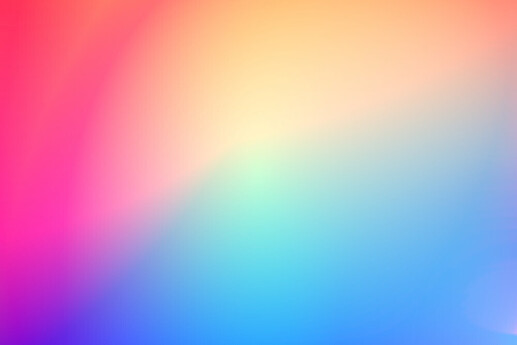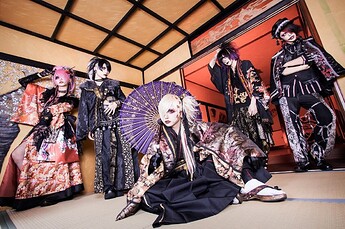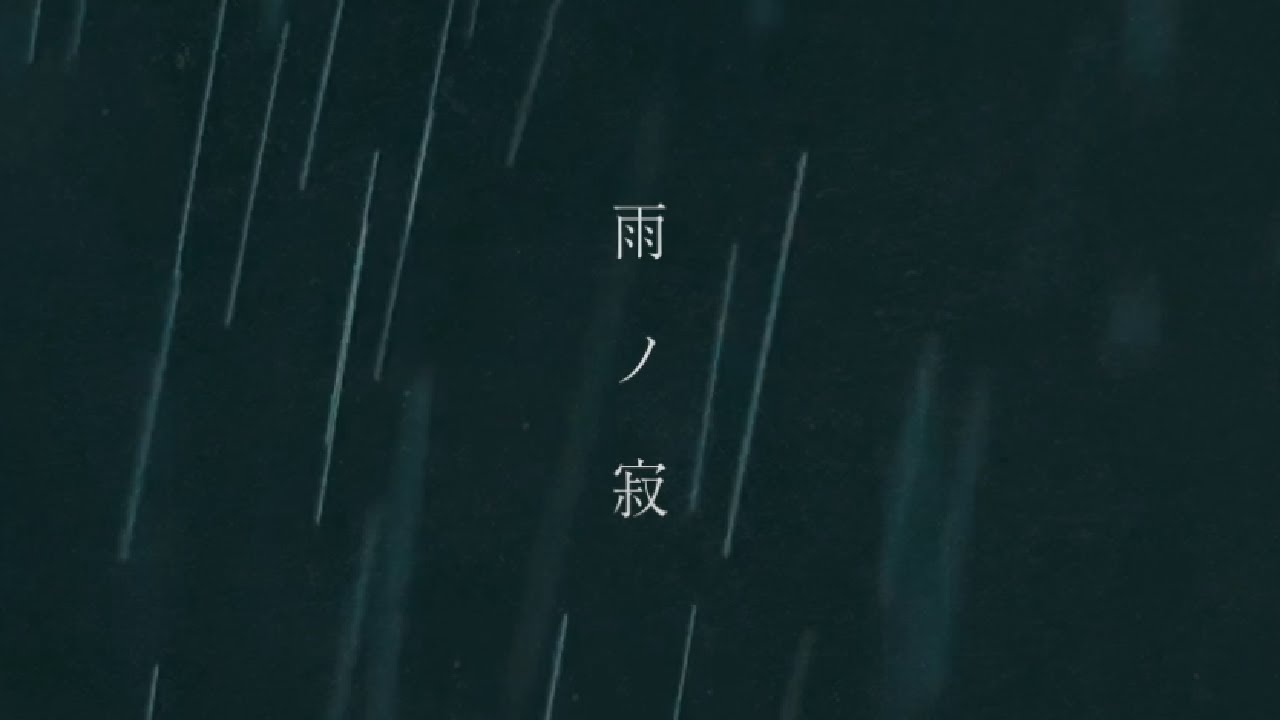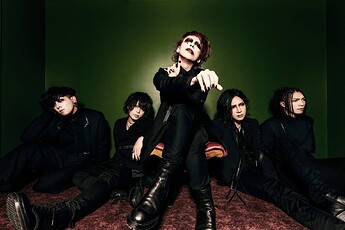So, Lynch, deadman, DEATHGAZE. After that it gets a bit confusing and left to interpretation. Kuroyume are from Nagoya, but their music isn’t anything like what you’d consider NK to sound like, and Ryo when he was in 9GOATS BLACKOUT was adamant that they weren’t a NK band. The confusion is justified, and I can’t imagine what the scene was like with fans arguing about whether or not Rouage, FANATIC CRISIS, and 黒夢 are NK due to varying degrees of the sound and look regardless of the fact they’re all from around the Aichi prefecture, if not the city of Nagoya. I’d be interested in hearing the perspectives of everyone here that’s into the sub-genre. I deliberately left out the later years to not have this be too long, feel free to mention TGADS and member swapping.
I put this in another topic but I don’t actually agree with using Nagoya-kei as a term to describe a subgenre of music. You even seem to have trouble describing it. It’s just like defining visual kei; the deeper you go the more confusing it gets, and like a fractal it never ends.
I’m actually just trying to make sense of this https://www.jame-world.com/en/article/23673-nagoya-kei.html which led me to coming here to picking the brains of those much more knowledgeable than myself about the signature sound of visual kei from Nagoya.
Maybe subculture within the bigger visual kei genre of Japanese rock would make more sense than sub-genre. I just remember the whole Oshare-kei, Nagoya-kei, Angura, etc in the early to mid 2000s and it became a thing and vk gy even uses them to differentiate.
Believe it or not I think the last.fm tag has one of the best descriptions of it from a musical style stand point. It’s most definitely not a sub-genre though I must agree nor is vk though.
"Nagoya kei’ is used for bands hailing from Nagoya. It’s usually darker, with more prominent basslines. A lot of ‘nagoya kei’ bands prefer “a less” visual style and might wear suits and smugdy make-up.
One of the first bands to be categorized as ‘nagoya kei’ were Silver-Rose. Other bands often categorized as ‘nagoya kei’ are Lamiel, Phobia and MERRY GO ROUND.
The label Donuts Records West is known for carrying ‘nagoya kei’ bands, such as Lamiel and Phobia."
Minus the beginning where they refer to it as a subgenre of visual kei. Which I’ve excluded for clarity. But I once had a discussion with tokage on m-h which is now lost since it was in the chat. But one common mistake is a band being labeled Nagoya kei simply for being from Nagoya which isn’t correct. For one Nagoya kei doesn’t even actually tie into visual kei it’s far older for one and also it’s called “kei” in this case merely referring to style of music not a visual asthetic i.e. Nagoya Style not kei in the same way.
This is something like London’s early shoegaze scene prior to it’s evolution. Which in the case of the Nagoya Style heavily focused around bass, developed in the early to mid 2000s most prominently with bands featuring guitarist aie. Bands such as deadman, the god and death stars, emmurée, highfashionparalyze and earlier bands can also be cited such as Merry-go-round. And some modern examples also include KEEL and gibkiy gibkiy gibkiy. Also lynch. including their early work is not Nagoya kei nor is DEATH GAZE although DEATHGAZE’s bass melodies are far closer. Listen to the above bands for a better understanding of the bass driven dark undertoned distorted melodies that represent the Nagoya Style.
Edit: This was just it’s later evolution though it dates back to the 70’s. Although I’ve never researched to much into bands from the pre late 90s/early 2000s era
Back in the day when I was getting to know the then-current bands I first thought, “oh right, DEATHGAZE and lynch., I love that dark heavy aggressive Nagoya kei”…
But then after a while I was thinking more along the lines of “hmmm but deadman and Merry go round, I do love me some of that melancholic weird Nagoya kei… hmmm that doesn’t feel right”…
And finally when I got deeper into the rabbit hole, “yeee boi, Kuroyume, Laputa and ROUAGE, that old-school classic sound of Nagoya kei is my shit… waaaaait a minute, WTF.”
So yeah, I guess the term can be applied to designate a certain loose set of musical traits each in their own era and/or groupings of certain bands, but to me it doesn’t really mean anything anymore, just a geographical marker on where the band is from (especially with the newer bands nowadays).
There’s a really good translation of (part of) an excellent article HERE btw, must-read.
This gets into what I posted over in another topic so I’ll just copy and paste it here.
I think in general we should just throw out the term “Nagoya-kei” because we use it to refer to dark, angsty music when the name literally translates to “Nagoya-style” and implies that all bands that come out of Nagoya sound the same. They don’t.
Even @sume7 says in his post that not all bands that come out of Nagoya play Nagoya-kei. Which just makes it even more confusing, because I have never seen a band refer to themselves as such. The vast amount of confusion that I have is personally why I shy away from using these terms.
I think @CAT5 said it best in the Discord, but I’ll start by saying a lot of these terms stemmed from the visual kei boom. Bands were popping up left and right and there were so many distinct styles and sounds under the visual-kei umbrella that it was only natural for people to try categorizing them. Categorizing is human nature. It gives context to and helps to explain what we see in the world. To some extent, these labels such as oshare-kei and nagoya-kei are useful because they paint a broad picture. But the problem with our categorizations are that they are not consistent or well-defined. They seem retrofitted to me.
Let’s take for example the fact that there are so many styles of visual kei from the 80’s that just get lumped under “proto visual kei” or all of the 90’s that get lumped into “kote-kei”, and even a lot of bands from the early 2000s get thrown under sofubi, but it’s not until the visual-kei boom where a lot of these definitions seem to “start” and to also be concentrated around. Can you find me an oshare-kei band older than 2003? When did Nagoya-kei start? When did kote-kei end? What about the start of angura-kei? Who was the first angura-kei band? What about bands that don’t cleanly fit into any of these categories, what are they? Why is it that we seemed to stop making new terms after 2010, even though the style and scene keeps progressing? Some of these questions I legit don’t have answers to.
And then to get back to the consistency thing, a lot of these terms are built different. Some define sounds. Some looks. Nagoya-kei is alone in describing a location. Then there are the terms that are like overly specific, like Tanbi-kei or Iryou-kei, which are useful in describing a type of fashion but are rarely used. Then there’s the whole debacle of “neo visual-kei”, which I can’t describe a sound or look for you because it seems to be used to describe everything after 2010. I mean at some point you can take a verb or adjective, affix -kei to it, and you’d be able to describe some aspect of the scene (ex. cyber-kei, brutal-kei, loud-kei, etc.).
Because that’s what we are doing. Trying to describe aspects of a scene. It’s why I described it as a fractal earlier, because that’s what it really is. It’s a pit where the deeper you go the less things make sense. It’s like trying to recall the details of a dream where the harder you try the more it slips away.
We have such a hard time trying to define what visual-kei is that it makes no sense to go even deeper and try to suss out the limits of an area where we haven’t even defined clean boundaries. And that is partially why I don’t like using these terms.
I agree but Nagoya is a little different but as I said I’m not super familiar with the 70s and 80s bands. But Nagoya kei would be like in my example above like if London’s early shoegaze bands which do have their own distinctive style instead came from Japan and called themselves shoegaze kei. Nagoya Style can actually be listened for and catorgizied by it’s distinctive sound whether it has to any great degree or correctly anywhere or not is another discussion.
Also shoegaze bands didn’t call themselves shoegaze either.
Thanks for linking that, very insightful, probably going to keep an eye on them for the next what I assume will be several parts.
Emma is a gem, that translation was fantastically useful. I always thought that nagoya-kei being used for non-nagoya based bands was a western thing, but good to see the niigata bands recognized as a subgenre of nagoya kei.
To add on to this (because I didn’t really finish), I feel like a lot of what I find inconsistent about the -kei system is that it treats visual-kei as a genre of music and not as a scene. I firmly believe it’s a scene because bands play fusions of rock, pop, and metal and also because it sits at the intersection of sound and aesthetics. But now’s not the time for that conversation.
Visual-kei to me is like a color gradient where each color represents a combination of music genre and aesthetics.
You can identify different hues of colors very easily within this picture, but if you start trying to draw boundaries to separate colors it gets hard. At some point the result is arbitrarily drawn lines. That’s what the -kei system feels like to me.
I don’t think I would have so much of a problem with it if bands could be more than one -kei at a time. And there’s nothing saying that a band can’t be, but I’ve never seen anyone do it that way. Rather, I saw people come up with new terms to describe new developments in the scene that old terms don’t cover (ex. koteosa to describe the fusion of kote and oshare). And then at some point we just stopped.
The -kei system is useful and it’s trying to fill a hole in our vocabularies that we need to describe visual kei bands to one another quickly. I’m not trying to convince anyone to abandon it, but rather to revive and improve it. I think that trying to assign terms like subgenres doesn’t scale well and I haven’t heard any new terms since “neo visual-kei” in 2010, which I think is so broad it’s not that useful. I think we need terms that describe what we see and hear, but aren’t exclusionary so that you can stack them.
I remember we ridiculed them when people first started using them, but when I think on it terms like brutal-kei and loud-kei are a step in that direction already. Maybe instead of using Nagoya-kei as a term to describe alternative metal bands with a melancholic, gloomy atmosphere we come up with several terms that actually describe the looks and the sounds? Like the forum tag system we have in place even.
I would say that’s somewhat okay it’s more of alternative rock but even so. Also I did attempt to describe the sound and gave bands as examples. I’m not well versed in musical terminology to the degree that I could describe it well enough to be thorough but that’s why I mentioned specific bands. That’s the best I could do. But like I said shoegaze is technically just another alternative rock but people continued to distinguish these bands as such and not the band members themselves. Nagoya kei is no different but again it’s not part of the same culture or in the same manner as visual kei. It was a specific sound which started with serveral bands in a specific city, just like London’s shoegaze. It’s ties to visual kei came from bands and fans alike later. It’s only similarity to visual kei originally was in the adjective “kei”, but it’s being used in this case in a different context. Bands later took advantage of this random similarity for promotion purposes and began to perform together. This created more confusion among the fandom and thus the visual kei being associated or referred to as a sub-genre of Nagoya Style merely for a similar adjective “kei” was born.
I’m very sorry I realized I failed with my previous explanation I was vague.
Are their any recent Nagoya kei bands? I feel like lynch. were the last ones
Some people might count the god and death stars and maybe KEEL.
Your question alludes to what I was getting at in my first of two word vomit sessions. These terms were created during the visual-kei boom and are mostly centered around it. Bands from 2006-2009 are pretty easy to slot into a lot of our definitions. Go far enough in either direction and those terms become less numerous and less specific. It is challenging to classify bands that are active right now with terms that we created to describe the scene ten years ago. Koteosa maybe? But I still don’t think that will work for all bands.
By coincidence I just happened to be on vk.gy while reading your description of what Nagoya-kei is. It changed the whole trajectory of this post.
Traditionally when I think of Nagoya-kei, I think of what you described. But reference this. This is a list of all bands on vk.gy that are tagged as nagoya-kei. I’m not sure what their criteria is but it’s a bit different.
This is a band called ALCYON. They are considered nagoya-kei. Here is a lyric video.
I’m referring to your definition in your first post too.
Which in the case of the Nagoya Style heavily focused around bass, developed in the early to mid 2000s most prominently with bands featuring guitarist aie. Bands such as deadman, the god and death stars, emmurée, highfashionparalyze and earlier bands can also be cited such as Merry-go-round. And some modern examples also include KEEL and gibkiy gibkiy gibkiy. Also lynch. including their early work is not Nagoya kei nor is DEATH GAZE although DEATHGAZE’s bass melodies are far closer. Listen to the above bands for a better understanding of the bass driven dark undertoned distorted melodies that represent the Nagoya Style.
This…doesn’t really sound like that to me. I also think it sounds pretty fucking rad and I gotta come back to them later. But it’s not what I think of when I think of Nagoya-kei. Is this Nagoya-kei? I am not equipped to say.
But that’s not the only band that’s really got me confused. ARLEQUIN is listed too. I’m somewhat more familiar with these guys and I’ve never sat and thought that they were Nagoya-kei. Here’s a look on vk.gy that could convince me. But I really don’t hear it.
Lamiel? I listened to a few of their songs and didn’t get the impression that they were Nagoya-kei, but I take a good look at their aesthetics and then I can’t unsee it. But right under them is Lustknot. and I never thought they looked or sounded Nagoya-ish, but they might be.

And then finally there’s The Pumpkin Head. I never would have pegged these guys as Nagoya-kei.

Also lynch. and DEATHGAZE and even DARRELL are listed.
So I’m just left with confusion honestly. What do you think?
their drummer started shimizuya records that later had a hell lot of very typical local only nagoya-kei signings (i.e. re:dis), typically with a very quick turnover rate too.
Lustknot looks like a typical indie band from the era when sadie and girugamesh were the hot shit, but if they’re local to nagoya they def fit.
technically, dexcore is in this scene too, despite the only thing connecting them after Naoki’s departure being the look.
Gauzes account themselves as Neo Nagoya Kei, if that counts
(I am late with my answer, zeus listed already other bands up)
Right, true. I didn’t really count them because gads releases are quite hard to find and KEEL are on “hiatus” (pretty sure they won’t be active anymore).
But now that you mention it: DARRELL, gibkiy gibkiy gibkiy and HOLLOWGRAM too of course! But these are mostly recycled old nagoya kei bands haha
The last fm comment was pretty much close onto it.
It is pretty simple~
Just think:
Black suits or simple black clothing common(country bumpkins aint got tye budget), late 90s typical vk musical and visual tropes but on the darker side of things (locals riding the laputa wave).
Anything along these lines will get a reaction of “oh its like nagoya kei.” to locals here who are from that era.
And as always you have the less knowledgeable fans here who will lump any nagoya band into it,
Even locals in nagoya now who are just wig wearing bumpkins who do music as a hobby are less knowledgeable than most fans on here haha.
![UNDER FALL JUSTICE [赤い日記帳] MV FULL](https://cdn.jrockone.com/uploads/default/original/3X/8/6/861d8da7907c0d50ddc0aaccc963a3db50022c9e.jpeg)




